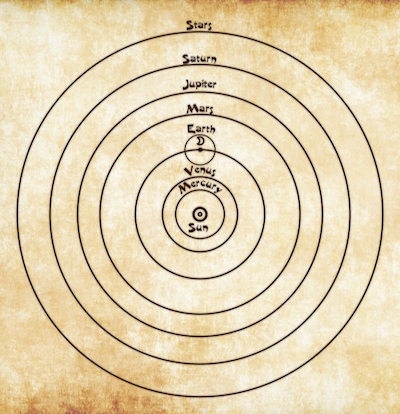WELCOME TO MY SCIENCE BLOG
If an idea, or hypothesis, correctly predicts how something will behave, we call it a theory. If an idea explains all the facts, or evidence, that we have found, we also call it a theory.
One of the reasons of why i choose this topic for my blog is that, Science is a really interesting topic and popular that nowadays everybody have studied and that you can't say that you had learn all about science.
If an idea, or hypothesis, correctly predicts how something will behave, we call it a theory. If an idea explains all the facts, or evidence, that we have found, we also call it a theory.
"Scientific method" usually means a series of steps that scientists follow to discover how nature works.
These steps will work fine for a school science fair project. But this is not usually the way science actually happens!
From observation to theory
Sometimes the observations come before the idea or theory.

This drawing is similar to the one made by Nicolaus Copernicus (published in 1543) and shows the Sun at the center of the solar system.
For thousands of years, people observed certain "stars" wander around the night sky in looping patterns. Finally, in 1514 Nicolaus Copernicus came up with the idea of "Heliocentrism" (meaning Sun centered). He thought the Sun was the center of the Universe, with Earth being one of many spheres orbiting the Sun. That idea explained the wandering patterns of the planets. It also predicted where they would "wander" next. This idea became a theory. Of course, we later improved that theory. After all, the Sun is not the center of the whole universe, but only our own solar system.
Sometimes science happens mostly inside a scientist's head.
Albert Einstein and his theories were like that. It took a long time before scientists were able to test them and show that they were correct.
In the 3rd blog we will be talking about earth,earth is our home planet. Scientists believe Earth and its moon formed around the same time as the rest of the solar system. They think that was about 4.5 billion years ago. Earth is the fifth-largest planet in the solar system. Its diameter is about 8,000 miles. And Earth is the third-closest planet to the sun.
Its average distance from the sun is about 93 million miles. Only Mercury and Venus are closer.
Earth has been called the "Goldilocks planet." In the story of "Goldilocks and the Three Bears," a little girl named Goldilocks liked everything just right.
Her porridge couldn't be too hot or too cold. And her bed couldn't be too hard or too soft. On Earth, everything is just right for life to exist. It's warm, but not too warm. And it has water, but not too much water.
Earth is the only planet known to have large amounts of liquid water. Liquid water is essential for life. Earth is the only planet where life is known to exist.
What Does Earth Look Like?
The equator is an imaginary circle that divides Earth into two halves. The northern half is called the Northern Hemisphere. The southern half is called the Southern Hemisphere. The northernmost point on Earth is called the North Pole. The southernmost point on Earth is called the South Pole.
In todays blog we would talking about hurricanes, first at all, what are the hurricanes?Hurricanes are large, swirling storms with winds of 119 kilometers per hour (74 mph) or higher. That's faster than a cheetah, the fastest animal on land.
The storms form over warm ocean waters and sometimes strike land. When a hurricane reaches land, it pushes a wall of ocean water ashore. This wall of water is called a storm surge, which along with heavy rain can cause flooding, especially near the coast.
Once a hurricane forms, weather forecasters predict its path and how strong it will get. This information helps people prepare for the storm before it arrives.
How Are Hurricanes Categorized?
A hurricane is categorized by its wind speed using the Saffir-Simpson Hurricane Scale.
- Category 1: Winds 119-153 km/hr (74-95 mph) - faster than a cheetah
- Category 2: Winds 154-177 km/hr (96-110 mph) - as fast or faster than a baseball pitcher's fastball
- Category 3: Winds 178-208 km/hr (111-129 mph) - similar, or close, to the serving speed of many professional tennis players
- Category 4: Winds 209-251 km/hr (130-156 mph) - faster than the world's fastest rollercoaster
- Category 5: Winds more than 252 km/hr (157 mph) - similar, or close, to the speed of some high-speed trains
Antarctica has just two seasons: summer and winter. Antarctica has six months of daylight in its summer and six months of darkness in its winter.
The seasons are caused by the tilt of Earth's axis in relation to the sun. The direction of the tilt never changes. But as the Earth orbits the sun, different+nhj parts of the planet are exposed to direct sunlight. During summer, Antarctica is on the side of Earth tilted toward the sun and is in constant sunlight. In the winter, Antarctica is on the side of Earth tilted away from the sun, causing the continent to be dark.
Who Lives in Antarctica?
Antarctica is too cold for people to live there for a long time. Scientists take turns going there to study the ice. Tourists visit Antarctica in the summers. The oceans surrounding Antarctica are home to many types of whales. Antarctica is also home to seals and penguins.



